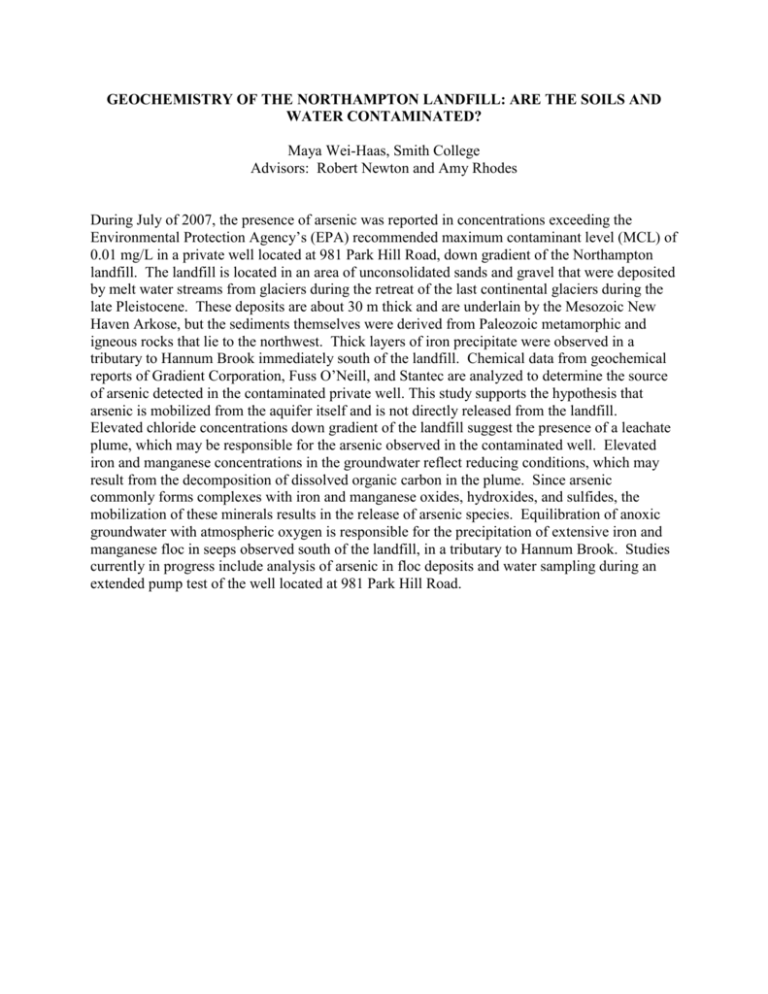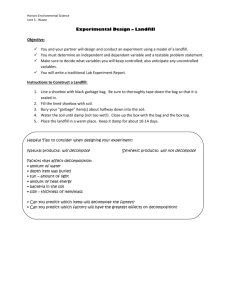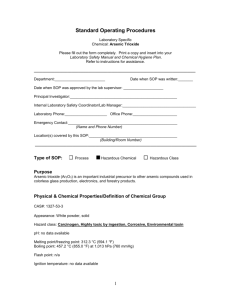GEOCHEMISTRY OF THE NORTHAMPTON
advertisement

GEOCHEMISTRY OF THE NORTHAMPTON LANDFILL: ARE THE SOILS AND WATER CONTAMINATED? Maya Wei-Haas, Smith College Advisors: Robert Newton and Amy Rhodes During July of 2007, the presence of arsenic was reported in concentrations exceeding the Environmental Protection Agency’s (EPA) recommended maximum contaminant level (MCL) of 0.01 mg/L in a private well located at 981 Park Hill Road, down gradient of the Northampton landfill. The landfill is located in an area of unconsolidated sands and gravel that were deposited by melt water streams from glaciers during the retreat of the last continental glaciers during the late Pleistocene. These deposits are about 30 m thick and are underlain by the Mesozoic New Haven Arkose, but the sediments themselves were derived from Paleozoic metamorphic and igneous rocks that lie to the northwest. Thick layers of iron precipitate were observed in a tributary to Hannum Brook immediately south of the landfill. Chemical data from geochemical reports of Gradient Corporation, Fuss O’Neill, and Stantec are analyzed to determine the source of arsenic detected in the contaminated private well. This study supports the hypothesis that arsenic is mobilized from the aquifer itself and is not directly released from the landfill. Elevated chloride concentrations down gradient of the landfill suggest the presence of a leachate plume, which may be responsible for the arsenic observed in the contaminated well. Elevated iron and manganese concentrations in the groundwater reflect reducing conditions, which may result from the decomposition of dissolved organic carbon in the plume. Since arsenic commonly forms complexes with iron and manganese oxides, hydroxides, and sulfides, the mobilization of these minerals results in the release of arsenic species. Equilibration of anoxic groundwater with atmospheric oxygen is responsible for the precipitation of extensive iron and manganese floc in seeps observed south of the landfill, in a tributary to Hannum Brook. Studies currently in progress include analysis of arsenic in floc deposits and water sampling during an extended pump test of the well located at 981 Park Hill Road.











